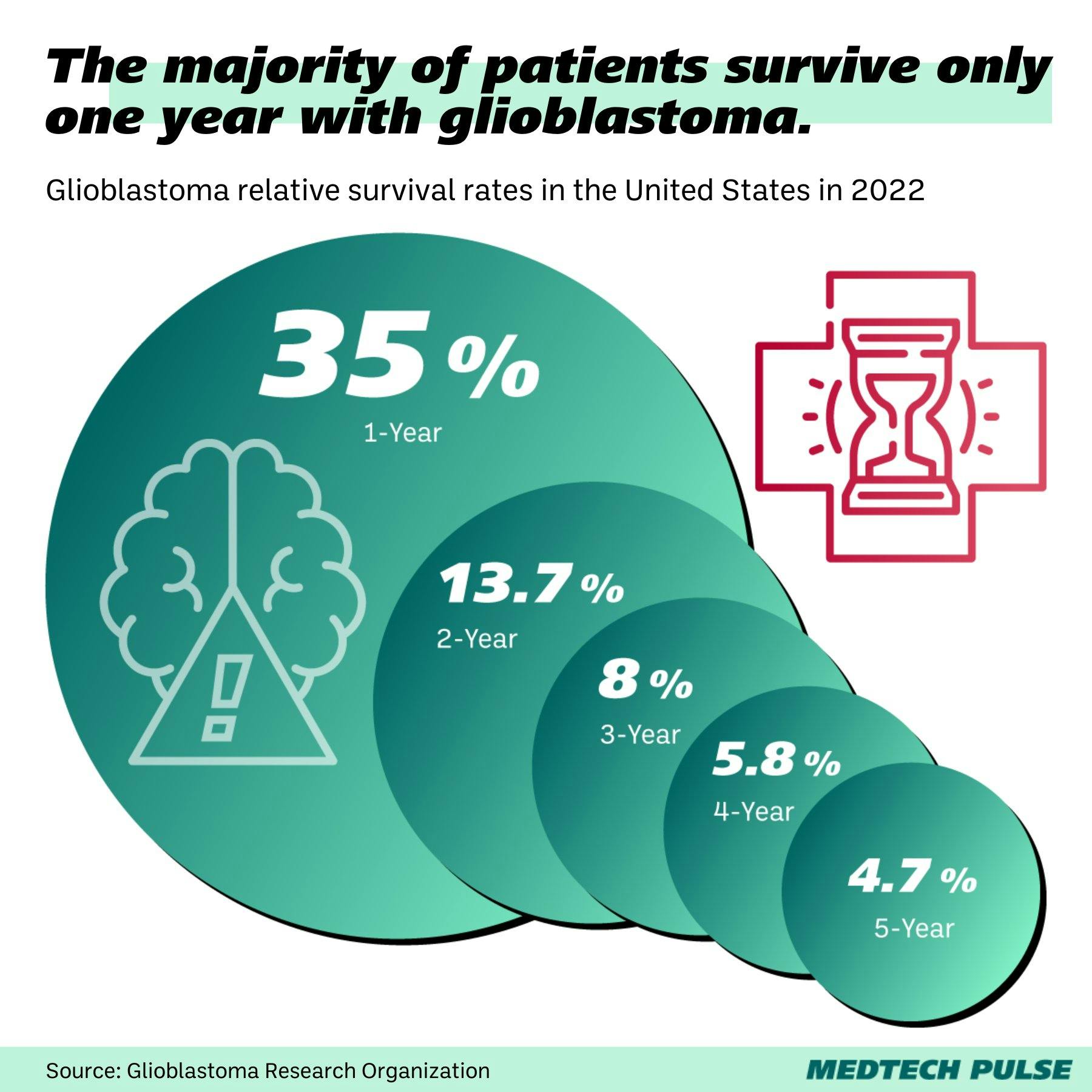This potential brain cancer treatment is a spray
University of Nottingham scientists have developed a spray treatment that can kill glioblastoma.
You may be imagining the kind of spray you use to clean your bathroom mirror—or a medical aerosol like an asthma inhaler.
Think smaller.
The researchers, whose study was published in Nature Nanotechnology, are positioning their approach as the first-ever “quantum therapy” for cancer, changing cell biology on the most minuscule level.
The impact of glioblastoma
Glioblastoma is a highly aggressive form of brain cancer. It kills over 10,000 people in the U.S. each year. The number of new glioblastoma cases annually has been estimated at 250,000 worldwide.

One of the reasons why this form of brain cancer is so deadly is the lack of treatment options. Currently, only four drugs and one device are approved to treat glioblastoma.
Also, understanding of the condition’s roots remains limited. It can impact patients of all ages and genders. Limited risk factors do exist, including previous radiation to the head and exposure to certain chemicals, such as pesticides, petroleum, synthetic rubber, and vinyl chloride.
This lack of understanding and effective options persists despite the fact that awareness of the condition is a century old. The first discussions of glioblastoma occurred in the scientific literature in the 1920s. We have been overdue for an effective new approach to this deadly disease.
This is why we were so excited about the unveiling of CHARM, a precision medicine tool for treating gliomas, and why we’re intrigued by the Nottingham team’s dive into the quantum realm of high-grade glioma—the glioblastoma.
How does a “quantum therapy” work?
Let’s discuss the spray in question.
The substance sprayed at the tumor sites is bio-nanoantennae, gold nanoparticles coated with redox-active molecules.
When researchers apply an electric field over a tumor site, the bio-nanoantennae turn the field into a biological signal, allowing them to regular cellular activity such as apoptosis—or cell death. This approach allows healthy cells to be left unscathed, while glioblastoma cells send themselves to their deaths.
“The team showed that cancer cells succumb to the intricate dance of electrons, orchestrated by the enchanting world of quantum biology,” said Dr. Frankie Rawson of the Nottingham School of Pharmacy. “With the advent of bio-nanoantennae, this vision of real-world quantum therapies edge closer to reality.”
Like CHARM, this quantum therapeutic marks an exciting advancement in precision medicine approaches to brain cancer. The bio-nanoantennae would be sprayed or injected during surgical tumor resection. We’re excited for a future where the AI-enabled precise molecular diagnostics of CHARM pair with the targeted treatment of bio-nanoantennae, giving providers treating this particularly challenging form of brain cancer a significant leg up.
The research team has now acquired accelerator funding and is seeking a patent, exciting first steps toward being able to use this technology to save human lives.